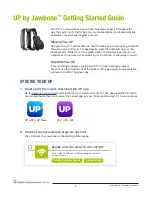
Appendix
70
S
SMF data error
Meaning: You
attempted
to
load
a
file
that
was
not
a
Standard
MIDI
File.
SMF div. error
Meaning: You
attempted
to
load
a
Standard
MIDI
File
that
was
timecode
‐
based.
SMF format error
Meaning: You
attempted
to
load
a
Standard
MIDI
File
of
a
format
other
than
0
or
1.
SMF has no data
Meaning: When
loading
a
Standard
MIDI
File,
the
file
contained
no
events.
Source is empty
Meaning: There
was
no
data
in
the
track
you
specified
as
the
source.
Action: Specify
a
track
that
contains
performance
data.
Stop & Retry
Meaning: This
will
appear
if
you
press
the
GRID
SEQ
button
during
sequencer
playback
or
recording.
Action: Stop
the
sequencer,
and
press
the
GRID
SEQ
button
again.
T
Too Many Events
Meaning: When
loading
a
Standard
MIDI
File,
the
maximum
number
of
events
in
a
single
measure
(approximately
65,535
events)
was
exceeded.
Meaning: The
edit
you
attempted
to
perform
would
exceed
the
maximum
number
of
events
in
a
single
measure
(approximately
65,535
events).
Action: Delete
unneeded
data.
W
Write failed
Meaning: An
error
(e.g.,
a
verify
error)
occurred
while
writing
data
to
media.
Action: It
may
be
that
the
media
is
physically
damaged;
please
use
other
media.
Avoid
using
the
media
that
produced
the
error.
Write protected
Meaning: The
media
where
you
attempted
to
write
data
is
write
‐
protected.
Action: Disable
write
‐
protect
on
the
media,
and
execute
the
command
once
again.







































